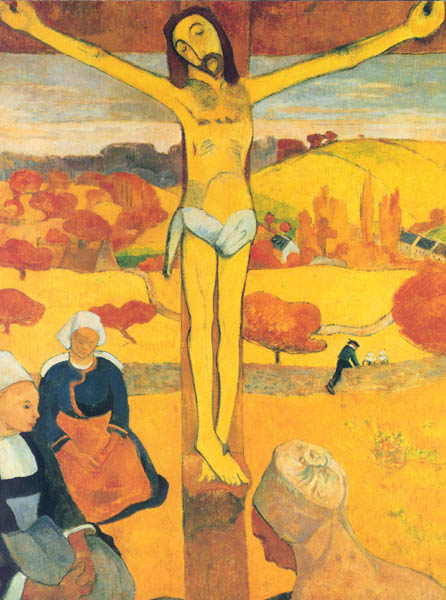Image Details

Albright-Knox Art Gallery, Buffalo, New York
The Yellow Christ, by Paul Gauguin. In 1889 the French painter was living in Brittany, and was as taken with the religious devotion of the local people as he was with the use of pure color. In this painting, he relocates the crucifixion to a wheatfield studded with crimson trees. At Christ’s feet, three Breton woman sit and pray. Like myriad artists before him, Gauguin depicted Jesus with his arms raised at about a 60-degree angle and affixed to the cross with nails in the palms.
Popular understanding in recent years has been that the nails that held Jesus’ arms must have been through his wrists, and that his death on the cross was caused by asphyxiation.
The author disputes both theories. Zugibe’s evidence demonstrates that, with arms raised no more than 60 or 70 degrees from vertical, a crucifixion victim would not have trouble breathing; and palms that are nailed through a space between certain bones can support several hundred pounds of human weight.
